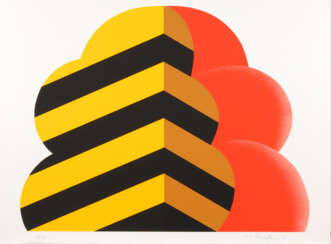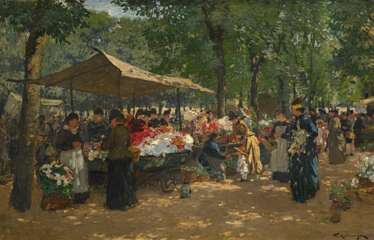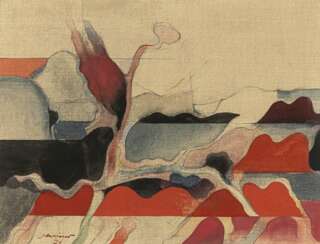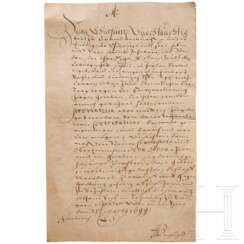hans friedrich

Friedrich Kallmorgen was a German Impressionist painter who specialized in landscapes and cityscapes.


Hans Baluschek, full name Alphons Anton Alexander Hans Ernst Karl Maria Baluschek, was a German painter, graphic artist and writer, representative of the New Materiality style.
Baluschek studied at the Royal Academy of Arts, and in 1900 became a member of the Berlin Secession, a group of artists that also included Ernst Barlach, Max Beckmann, and Wassily Kandinsky. Baluschek was always socially critical, which was reflected in the subjects of his paintings. Many of his paintings are dedicated to the working class of Berlin, he addressed the gray everyday life of Berlin: gray air, gray walls, gray people. Baluschek is often categorized as a German Expressionist because of his emotional style, but his style has something of New Objectivity, Impressionism, and naive painting. He also drew illustrations for the popular children's book Little Peter's Trip to the Moon, and collaborated with periodicals as an illustrator.
World War I instilled patriotic feelings in Baluschek, and he painted a number of subjects on this theme. After the war, he joined the Social Democratic Party and became involved in labor movements. In 1926 he helped establish an artists' relief fund and later became director of the annual Berlin Exhibition. The German Nazis, who came to power in 1933, declared Baluschek a Marxist and a "degenerate artist," suspended him from all positions, and banned him from exhibiting.


Friedrich Kallmorgen was a German Impressionist painter who specialized in landscapes and cityscapes.


Hans Thoma was a German painter.
In spite of his studies under various masters, his art has little in common with modern ideas, and is formed partly by his early impressions of the simple idyllic life of his native district, partly by his sympathy with the early German masters, particularly with Albrecht Altdorfer and Lucas Cranach the Elder. In his love of the details of nature, in his precise drawing of outline, and in his predilection for local coloring, he has distinct affinities with the Pre-Raphaelites.


Hans von Marees was a German artist of the mid-nineteenth century. He is known as a painter and graphic artist, a representative of symbolism.
Von Marees was a prominent not only practitioner but also art theorist. He created the "Roman Circle" of German artists, whose activities in Italy seriously influenced the development of fine art of the turn. Marees 's work was centered on the theme of harmonious coexistence between man and nature, he sought to achieve the ideal relationship between form and space, as in the art of the ancient Greeks and the Italian Renaissance. At the height of his career, he turned to mythological subjects and developed a sophisticated technique, creating deep and saturated colors with layers of oil paint.


Friedrich August von Kaulbach was a German portraitist and historical painter.


Friedrich Kallmorgen was a German Impressionist painter who specialized in landscapes and cityscapes.


Hans Meyer-Kassel was a German and American landscape painter, illustrator, and draftsman.
He received a classical art education in Munich and served as a war painter during World War I. Later as a portrait painter he depicted numerous European officials on commission.
In 1922 Meyer-Kassel emigrated to the USA and in time became a revered painter in that country. He painted views of New York City and city life, seascapes, still lifes, and later portraits of famous people. Four portraits of Nevada governors, where he lived his last years, adorn the walls of the state capitol building.


Hans Richard von Volkmann was a German illustrator and landscape painter, associated with the Düsseldorfer Malerschule.


Hans Holtorf is a German landscape painter and writer.


Hans Schreiner was a German painter and stained glass artist.
Hans Schreiner, a graduate of the Stuttgart Academy, in the mid-1950s became a member of the Group of 11, which also included Atila Biro, Günter K. Kirchberger, Friedrich Sieber and Georg Karl Pfahler. The artist called himself an abstract landscape painter, he used, among other things, the Informel style to create symbolic imagery. In addition to painting,
Schreiner also designed stained glass windows and structures for churches. He was a member of the Association of German Artists and actively participated in exhibitions.


Hans Schreiner was a German painter and stained glass artist.
Hans Schreiner, a graduate of the Stuttgart Academy, in the mid-1950s became a member of the Group of 11, which also included Atila Biro, Günter K. Kirchberger, Friedrich Sieber and Georg Karl Pfahler. The artist called himself an abstract landscape painter, he used, among other things, the Informel style to create symbolic imagery. In addition to painting,
Schreiner also designed stained glass windows and structures for churches. He was a member of the Association of German Artists and actively participated in exhibitions.


Hans Schreiner was a German painter and stained glass artist.
Hans Schreiner, a graduate of the Stuttgart Academy, in the mid-1950s became a member of the Group of 11, which also included Atila Biro, Günter K. Kirchberger, Friedrich Sieber and Georg Karl Pfahler. The artist called himself an abstract landscape painter, he used, among other things, the Informel style to create symbolic imagery. In addition to painting,
Schreiner also designed stained glass windows and structures for churches. He was a member of the Association of German Artists and actively participated in exhibitions.


Hans Schreiner was a German painter and stained glass artist.
Hans Schreiner, a graduate of the Stuttgart Academy, in the mid-1950s became a member of the Group of 11, which also included Atila Biro, Günter K. Kirchberger, Friedrich Sieber and Georg Karl Pfahler. The artist called himself an abstract landscape painter, he used, among other things, the Informel style to create symbolic imagery. In addition to painting,
Schreiner also designed stained glass windows and structures for churches. He was a member of the Association of German Artists and actively participated in exhibitions.


Hans Schreiner was a German painter and stained glass artist.
Hans Schreiner, a graduate of the Stuttgart Academy, in the mid-1950s became a member of the Group of 11, which also included Atila Biro, Günter K. Kirchberger, Friedrich Sieber and Georg Karl Pfahler. The artist called himself an abstract landscape painter, he used, among other things, the Informel style to create symbolic imagery. In addition to painting,
Schreiner also designed stained glass windows and structures for churches. He was a member of the Association of German Artists and actively participated in exhibitions.


Friedrich Harden was a German impressionist painter who specialised in cityscapes and port scenes.


Hans Schreiner was a German painter and stained glass artist.
Hans Schreiner, a graduate of the Stuttgart Academy, in the mid-1950s became a member of the Group of 11, which also included Atila Biro, Günter K. Kirchberger, Friedrich Sieber and Georg Karl Pfahler. The artist called himself an abstract landscape painter, he used, among other things, the Informel style to create symbolic imagery. In addition to painting,
Schreiner also designed stained glass windows and structures for churches. He was a member of the Association of German Artists and actively participated in exhibitions.


Hans Schreiner was a German painter and stained glass artist.
Hans Schreiner, a graduate of the Stuttgart Academy, in the mid-1950s became a member of the Group of 11, which also included Atila Biro, Günter K. Kirchberger, Friedrich Sieber and Georg Karl Pfahler. The artist called himself an abstract landscape painter, he used, among other things, the Informel style to create symbolic imagery. In addition to painting,
Schreiner also designed stained glass windows and structures for churches. He was a member of the Association of German Artists and actively participated in exhibitions.


Hans Schreiner was a German painter and stained glass artist.
Hans Schreiner, a graduate of the Stuttgart Academy, in the mid-1950s became a member of the Group of 11, which also included Atila Biro, Günter K. Kirchberger, Friedrich Sieber and Georg Karl Pfahler. The artist called himself an abstract landscape painter, he used, among other things, the Informel style to create symbolic imagery. In addition to painting,
Schreiner also designed stained glass windows and structures for churches. He was a member of the Association of German Artists and actively participated in exhibitions.


Hans Schreiner was a German painter and stained glass artist.
Hans Schreiner, a graduate of the Stuttgart Academy, in the mid-1950s became a member of the Group of 11, which also included Atila Biro, Günter K. Kirchberger, Friedrich Sieber and Georg Karl Pfahler. The artist called himself an abstract landscape painter, he used, among other things, the Informel style to create symbolic imagery. In addition to painting,
Schreiner also designed stained glass windows and structures for churches. He was a member of the Association of German Artists and actively participated in exhibitions.






































































